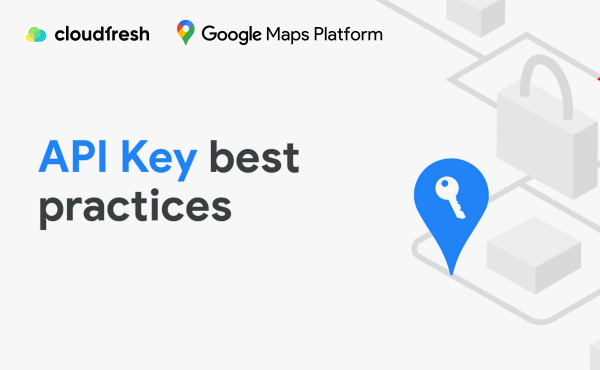Google Maps API: How to Get Started
Google Maps Platform – 15 years together: Something new for You to know
It was 15 years ago, when Google launched its Maps API for the first time in June, 2005. It sounds so usual for us now – “to combine data about the location and a map of the location and to add this complex map to a website” – but at the early 2000-s this method opened a whole new world for businesses. According to the client reviews, Google Maps “mashed-up” API paved the way for developing, transforming, enlarging, etc for dozens of companies and organizations.
In a contemporary world Google Maps API isn’t just about adding a map to a site or application – it has already grown into an enormous platform, which empowers more than 5 million of clients, customers, developers, partners, organizations of all sizes and spheres, etc. From today’s perspective, we see that it’s been a long 15 years of challenging collaborative work that has led to the appearing of such a great and irreplaceable platform. We did it all together – every contribution played a role in the development of the Platform.
Nowadays, the need for innovations and technical progress is ever-growing, so it is of a vital importance to be ready to face the needs of the clients and colleagues. Now we’d love to announce some new features of the Google Maps Platform, which will be a new perspective for the further 15 years. All of them will be aimed at such points as: complex and professional help, providing the best possible solutions and, of course, driving innovations.
Expanding industry solutions
By the present time Google has collaborated with a limited number of gaming companies. Together they created real-location based products, which became a great boom in a world of mobile gaming. So, Google created their own solution for gaming companies, independent developers and other involved professionals. There will be a mammoth area to experiment with location data and gaming processes and create something irresistible, they claim.
More tooling and resources for developers
Google also sees their further development in improving their resources and tooling. For instance, the Android platform has already been released the first version of a new open source – Kotlin Extensions Library. Conversely, the iOS has also been added a division for iOS Maps SDK and iOS Utility Library via Cartage. Google’s plans also include improvements of Swift, Kotlin and JavaScript. They have also already published their new Codelabs for beginners to help them with the Maps Platform on Android, iOS and JavaScript client API’s.
Powering contextual experiences
Google Maps Platform is also implementing better capabilities so as to provide users with more contextualized and personalized experiences. Combined they give users more control over the number and types of POIs, being shown on the maps, the coherence of updating the maps in near real-time and updating maps without changes in codes. The company has also blended the main 3 categories of the Platform – Maps, Routes and Places – for enlarging the number of options, available for users. Local Context is an outstanding experience that grants the most accurate information possible about places and locations, consisting of reviews, pictures, ratings, directions, etc. These main development directions will provide the most efficient, easy and comfortable customer experience we’ve ever seen.
During the next 15 years (and even more) Google will be still looking for ways to improve themselves and to develop their products, inquiring from their clients’ and partners’ feedback. This will be an essential part of the advancing process, being held the next 15 years.













